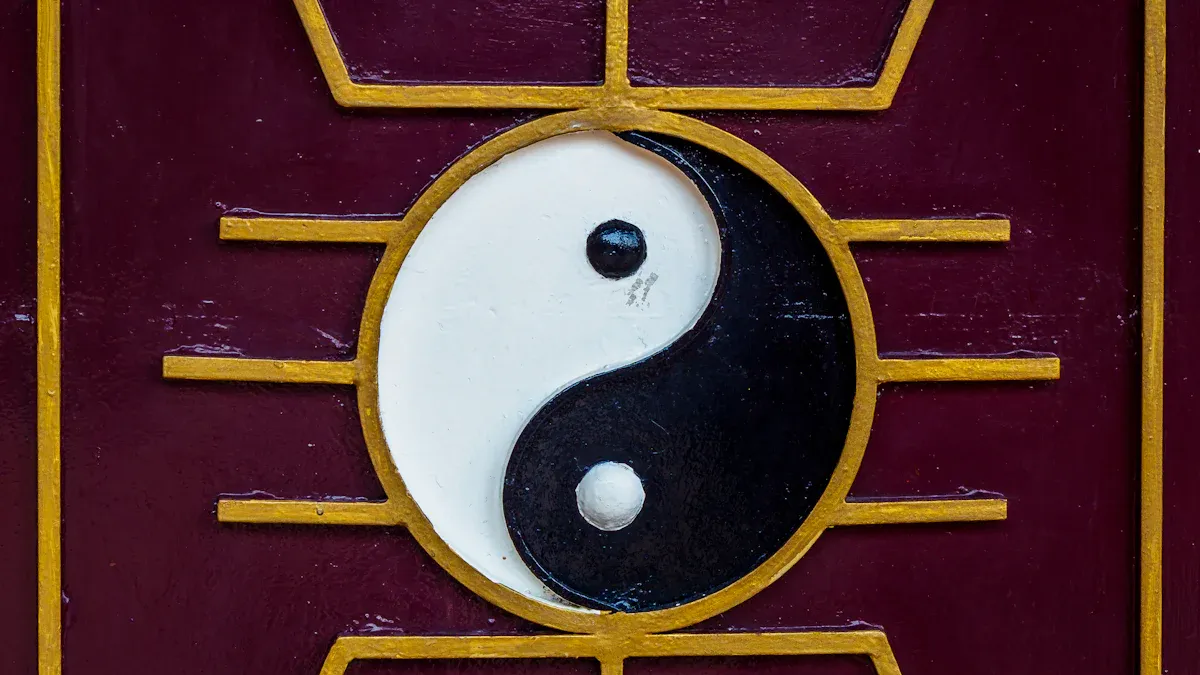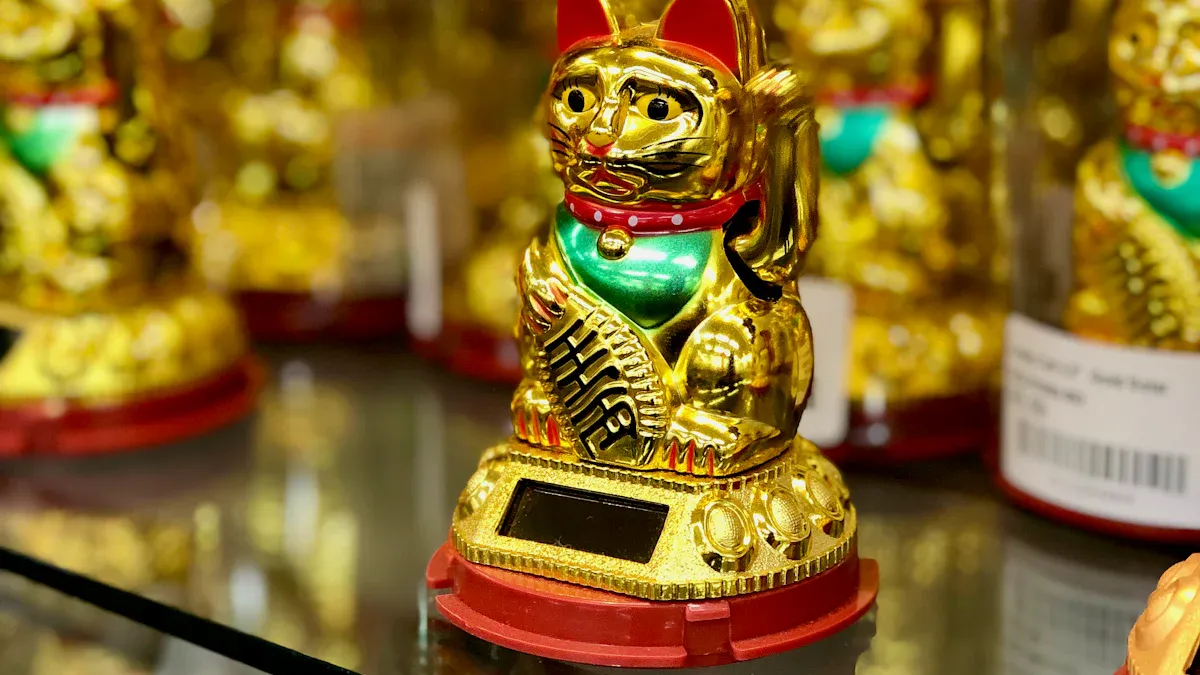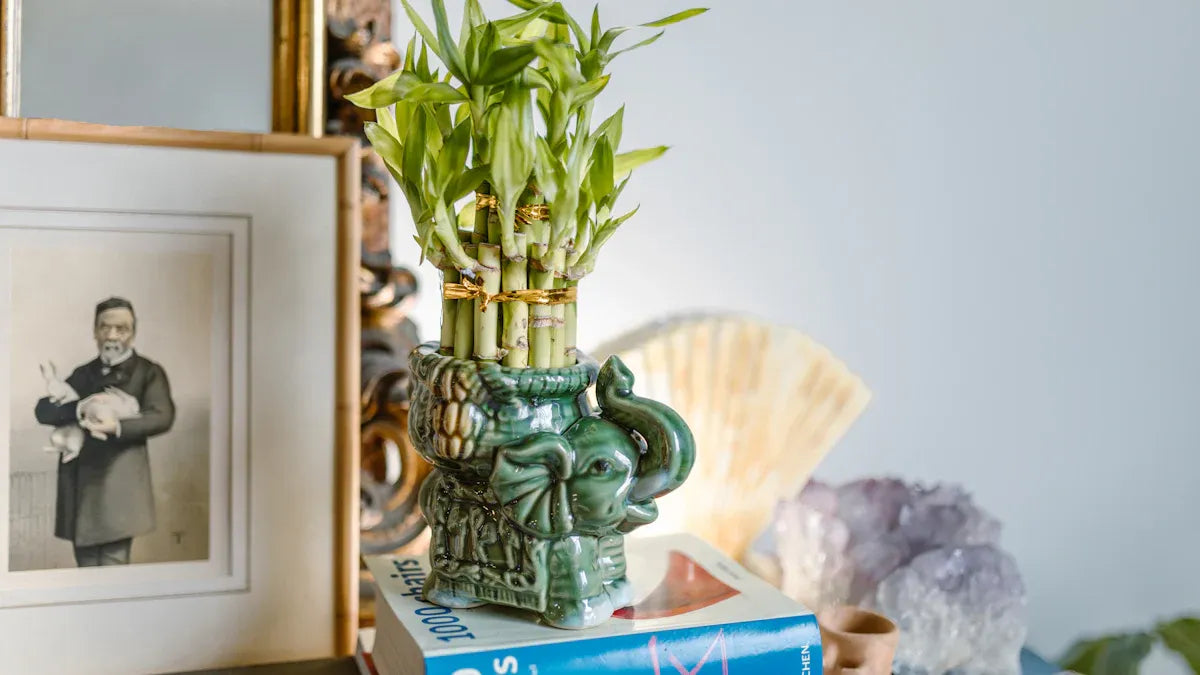When I first heard about feng shui, I wondered how to say it right. You spell it as “feng shui” and say it like “fung shway” (/ˈfʌŋˌʃuːi/). The words mean “wind-water.” This definition shows how nature shapes energy. I find that knowing the feng shui definition helps me understand the feng shui practice better.
Feng-shui isn’t just a word. The definition connects us to balance and harmony in our lives.
Key Takeaways
Feng shui means 'wind-water.' It teaches us how energy moves in nature and in our homes. This helps us make balance and peace.
Say feng shui as 'fung shway.' Spell it right to show respect for its tradition. This helps you understand what it really means.
Use feng shui ideas like energy flow (qi), yin-yang balance, five elements, and the bagua map. These help you set up your space for calm, health, and good luck.
Feng Shui Meaning

Literal Translation
When I first heard about feng shui, I thought its meaning was interesting. The words “feng” and “shui” mean “wind” and “water” in Chinese. This meaning is not just about weather. In old Chinese culture, wind and water stand for invisible forces that shape our world. I think of them as signs of energy, or “Qi,” moving everywhere.
Studies show that feng shui is about harmony. Wind and water show how energy moves. If wind is too strong, energy spreads out. If water cannot move, it stops flowing. Feng-shui teaches us to keep these forces balanced. This helps energy move well. When energy flows, we feel calm and healthy.
Old Chinese medical books talk about wind and water too. They use these ideas to explain how energy moves in our bodies. Water stands for softness and hidden power. The Daode jing, a famous Chinese book, says water is gentle but strong. I think this shows why flow and balance matter in feng shui.
Other old cultures also link wind and water to power and direction. For example:
The east wind in old Hebrew and Sumerian stories could bring good or bad things.
Many languages connect wind and water to storms, life, and change.
Old stories use wind and water as signs of energy and change.
So, feng shui is not just about weather. It is about how energy moves in nature and in our lives.
Pronunciation and Spelling
I remember having trouble saying feng shui at first. The right way to say it is “fung shway.” If you want to be exact, you can use these spellings: /ˈfʌŋˌʃuːi/ or /ˌfʌŋˈʃweɪ/. Some people say /fɛŋˈʃuː.i/, but that is not the usual way.
Here’s a quick guide:
Spelling |
Pronunciation (IPA) |
How It Sounds |
|---|---|---|
feng shui |
/ˈfʌŋˌʃuːi/ |
fung shway |
feng shui |
/ˌfʌŋˈʃweɪ/ |
fung shway |
Wiktionary and other guides have sound clips if you want to listen. I tell my friends to remember “fung shway” because it is simple and close to the real sound.
The spelling “feng shui” comes from the Chinese characters 風水. Some people write “feng-shui” with a dash, but most people do not. Saying and spelling it right helps us respect the tradition and know what it really means.
Origins and History
Feng shui has a long and rich history. I enjoy learning how it began thousands of years ago in China. Early Chinese people saw that where they put homes, graves, and cities changed their lives. They wanted to live in peace with nature, so they watched the wind, water, and land.
Archaeologists found old Chinese graves that follow feng shui rules. For example, graves often faced south for warmth and safety. These old ways show people cared about energy flow before feng shui became a system.
The first big book about feng shui is called the Book of Burial, or Zang Shu, written by Guo Pu around 300 CE. This book tells how to pick the best place for a grave by looking at the land, water, and wind. It is one of the oldest books about feng shui.
Here’s a timeline that shows how feng shui meaning changed over time:
Period / Dynasty |
Approximate Years |
Key Developments in Feng Shui |
Representative Texts and Contributions |
|---|---|---|---|
Pre-Qin |
Before 221 BCE |
Early divination, Five Elements, Yin/Yang, Bagua integration |
I Ching (Book of Changes) – foundation for cosmology and trigrams |
Qin Dynasty |
221–207 BCE |
Earth veins (Dimai), ritual burial practices |
Directional symbolism in burials |
Han Dynasty |
206 BCE–220 CE |
Heaven-Earth-Human study (Kanya), Dragon Veins, terrain mapping |
Development of burial and site selection techniques |
Tang Dynasty |
618–907 |
Integration with Buddhism and Daoism, formalization of Feng Shui texts |
Water Dragon Classic, Zang Shu (Book of Burial) by Guo Pu |
Song Dynasty |
960–1279 |
Emergence of Form and Compass Schools, use of Luo Pan compass |
Refinement by Yang Yun Sung and Wang Chih |
Ming & Qing |
1368–1911 |
Popularization, Flying Star and Ba Zhai methods |
Application in court architecture aligned with geomantic principles |
Yuan Dynasty |
1279–1368 |
Spread beyond China, cultural transmission to Korea, Japan, SE Asia |
Feng Shui principles adapted in foreign contexts |
I think it is amazing that feng shui started with old Chinese burial customs and now helps design homes. Over time, it spread to places like Korea and Japan. Even today, people use feng-shui to make homes and offices peaceful.
Feng shui meaning has always been about the link between people and their surroundings. The meaning has grown, but the main idea stays the same: finding balance and harmony with the world around us.
Principles of Feng Shui
When I started learning about feng shui, I realized that understanding its core principles made everything easier. These principles of feng shui help me see how to create a space that feels calm, balanced, and full of good energy. Let me walk you through each one.
Chi and Energy Flow
The first thing I learned was about qi (sometimes spelled "chi"). Qi is the life force or energy that moves through everything. In feng shui, qi connects people, objects, and spaces. I like to think of qi as a gentle breeze or a flowing stream. When qi moves smoothly, I feel relaxed and focused. If it gets stuck, I notice tension or discomfort.
Feng shui design aims to guide qi so it flows freely. I use open pathways, clear clutter, and arrange furniture to help good chi move around my home. Sometimes, I add plants or water features to boost positive qi. I avoid blocking doors or windows, since that can trap energy.
Tip: I always check for sharp corners or crowded spaces. These can block qi and stop good chi from reaching every part of a room.
Researchers have tried to measure qi, but it remains a mystery. Some studies link feng shui principles to environmental comfort and well-being, even if science cannot fully capture qi. I focus on how my space feels. If I sense positive qi, I know I am on the right track.
Yin-Yang Balance
Another key principle is yin-yang balance. Yin and yang are two opposite forces that work together. Yin feels soft, cool, and quiet. Yang feels bright, warm, and active. I see yin-yang everywhere: night and day, rest and movement, dark and light.
In feng shui, I try to balance yin and yang in every room. Too much yin makes a space feel sleepy. Too much yang feels overwhelming. I use soft fabrics and gentle lighting for yin. I add bright colors and lively music for yang. The right mix creates harmony and supports the balance of energy.
I notice that when I balance yin and yang, my home feels more welcoming. I sleep better in a room with both cozy blankets (yin) and a sunny window (yang). This balance helps good chi flow and keeps positive qi strong.
Five Elements
The five elements are another foundation of feng shui rules. These elements—wood, fire, earth, metal, and water—each bring their own energy. I use them to shape the mood and function of a space. Here is a quick guide I keep handy:
Element |
Meaning |
Direction |
Colors |
Shapes |
Season |
Design & Décor Suggestions |
Objects Conveying Positive Chi |
Cautions |
|---|---|---|---|---|---|---|---|---|
Earth |
Trust, reliability, grounded, balanced |
Center |
Light yellow, beige, peach, light brown |
Square |
Indian Summer |
Landscapes, square furniture, plaid fabrics |
Crystals, ceramic, clay, brick, rock |
Avoid in conference rooms for tough talks |
Wood |
Growth, creativity, healing |
East |
Green, brown |
Rectangle |
Spring |
Plant art, rectangle tables, floral fabrics |
Plants, flowers, wooden items |
Too much can cause risky thinking |
Fire |
Inspiration, passion, motivation |
South |
Red, strong yellow, orange, magenta, pink |
Triangle |
Summer |
Animal art, red décor, leather |
Lamps, candles, sunlight |
Limit in restful spaces |
Water |
Introspection, wisdom |
North |
Black, blue |
Wavy |
Winter |
Glass, water features, water art |
Glass, fountains, curvy paths |
Use carefully in active areas |
Metal |
Precision, focus, control |
West |
White, ivory, gray, silver |
Circle |
Autumn |
Metal art, round tables, metallic fabrics |
Metal objects, coins, utensils |
Avoid in creative or relaxing spaces |
I use these elements to choose feng shui colors, shapes, and materials. For example, I add green plants (wood) in the east for growth. I use earth tones in the center for stability. If a room feels too fiery, I add water features to cool things down. This method helps me create harmony and attract good chi.
Studies show that using the five elements in feng shui design can improve comfort and well-being. I have seen how the right mix of feng shui colors and objects brings positive qi into my home.
Bagua Map
The bagua map is my favorite feng shui tool. It is like an energy map for any space. The bagua map divides a room or building into nine areas, each linked to a part of life—like health, wealth, love, or career. I use the bagua energy map to see which part of my home connects to my goals.
To use the bagua map, I lay it over my floor plan. Each section matches a direction and an element. For example, the southeast area links to wealth and wood. I put healthy plants or green décor there to boost positive qi and attract abundance.
The bagua map helps me spot areas that need attention. If my career area feels cluttered, I tidy up and add water features for flow. I use the feng shui compass to align the map with my home’s layout. This way, I follow the principles of feng shui and support good chi in every part of my life.
Note: The bagua map is also called the feng shui energy map. I find it easy to use, even as a beginner.
I have read that architects and designers use the bagua map to plan spaces that feel balanced and inviting. Research shows that these principles can improve living quality and support well-being. I love how the bagua map gives me a clear path to bring positive qi and harmony into my home.
Feng Shui Your Home

Simple Tips
When I started to feng shui your home, I looked for easy changes that made a big difference. I always begin with the entryway feng shui. I keep my front door clear of shoes, bags, and clutter. This helps qi flow into my space and sets a welcoming tone. I also like to add a small plant or a bright rug near the door.
In the bedroom, I focus on feng shui in the bedroom by placing my bed against a solid wall and away from the door. I avoid mirrors that reflect the bed, since that can disturb sleep. Studies show that most people spend about 11 hours a day in bed, so making this space peaceful really matters. I use soft colors and keep electronics out of the room.
Here are my favorite simple feng shui tips:
Open windows daily to let in fresh air and natural light.
Use feng shui plants in the living room and bedroom for calm and abundance.
Arrange feng shui furniture placement so you can see the door from your main seat.
Keep the stove and kitchen clean to invite prosperity.
Tip: I always address the messiest spot first. Clearing it out frees up positive energy right away.
Everyday Application
I use feng shui your home ideas every day. In the morning, I spend time in the brightest part of my home, usually near a window. I move my desk close to natural light, which boosts my mood and energy. For feng shui in a living room, I make sure seats face each other to encourage good conversation.
I noticed real changes after I started these habits. My sleep improved with feng shui in the bedroom, and my family felt more relaxed. Friends who tried feng shui your home tips reported better relationships, more abundance, and even unexpected financial gains. Some said moving furniture or adding metal or wood elements brought more comfort and peace.
I believe anyone can feng shui your home with small steps. Try one tip at a time and see how your space feels. Even a tiny change can invite more harmony and happiness.
I spell it “feng shui” and say “fung shway.” The meaning connects me to balance and comfort. Studies show people feel calmer and happier in spaces arranged with these ideas. I love how small changes can boost my mood. Try a tip today—your home might surprise you! 😊
FAQ
How do I start using feng shui at home?
I always begin by clearing clutter. I open windows for fresh air. I move furniture so I can see the door from my main seat.
Tip: Start small. One change can make a big difference!
Can I use feng shui in a small apartment?
Yes! I use mirrors to reflect light and add plants for fresh energy. Even tiny spaces feel better with a few simple feng shui tips.
Do I need special tools or a compass?
No, I don’t need anything fancy. I use a simple floor plan and trust my senses. I focus on how my space feels to me.










